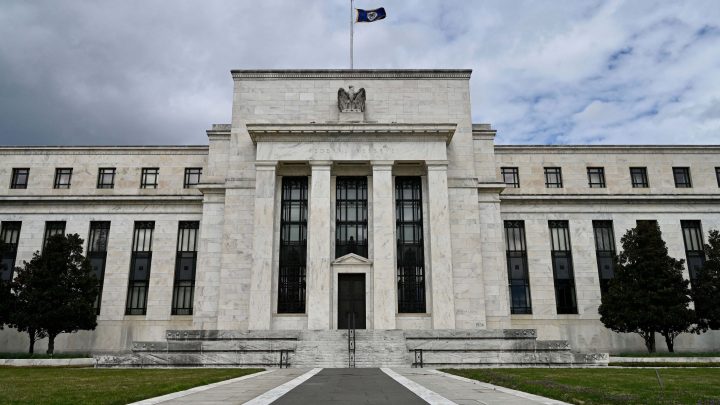
The Federal Reserve could help instant payments catch on

The Federal Reserve gets a lot of attention when it comes to its interest rate decisions. Recently, its role as a bank regulator grabbed the spotlight too, after the wave of bank failures earlier this year.
But the Federal Reserve also manages more than $5 trillion worth of payments that banks make every day. A couple of weeks ago, the Federal Reserve launched FedNow, a new payment service that’s meant to modernize the payment system by letting people send and receive money instantly, instead of having to wait two or three days for a payment to clear.
The thing is, if a customer wants to use the Fed’s new service, their bank has to sign up. And so far, only about a couple dozen have.
Banks know that their customers want to move money around instantly, just like an email or a text message.
“We need to be able to compete and offer those products,” said Robert James II, CEO of Carver Financial Corporation, a company with community banks in Alabama and Georgia.
Many mobile payment apps offer their own instant payment options, which James said has raised the standard for money transfers. “There’s just an expectation that you can access money instantaneously.”
The Federal Reserve says its system is much broader than a person-to-person payment app. Customers at a bank with FedNow could pay bills at the last minute. Businesses could receive payments instantly, and then turn around and spend the money. Workers could get their paychecks faster.
“People who are looking for you to pay them are expecting their money immediately, not with a lag that comes from either writing a check or sending it through a system that requires a 2- or 3-day hold,” James said.
But James said that his banks are not signing up for the Fed’s instant payment service yet. One reason? Small banks like his often don’t have the staff and resources to manage new technology, which means they have to pay for third-party companies to get it up and running.
“Every time we add a new system or feature, it ends up costing the bank and it makes our overhead higher,” he said.
Adding a new payment system also requires employee training, new customer policies and an updated website.
“There’s a lot of moving parts, even beyond just connecting to the technology,” said Lance Noggle with the Independent Community Bankers of America.
Banks would also need to come up with new customer protection measures, he added, to prevent people from accidentally sending instant payments to the wrong person or to scammers.
“It’s not like a check, where if I sent a check to somebody, I’m like, ‘Man, I really shouldn’t have sent that check. I can call the bank and do a stop payment,’” Noggle said. “Once money is sent through an instant payment network, it’s gone.”
The Federal Reserve isn’t exactly blazing a trail here. A separate instant payment network — called Real-Time Payments — has been around for more than 5 years. It’s operated by The Clearing House, a company owned by several big banks.
“I think that there are lots of community banks who were understandably concerned about relying on a service that’s provided by their competitors,” said Julie Hill, a professor at the University of Alabama.
But in the last year, The Clearing House said the number of banks using its service has picked up. Jim Colassano, who’s responsible for The Clearing House’s instant payment network, said that’s likely because the Fed has stepped in with its own service.
“By having both of us in the market now, we do feel that we’re going to start some real uplift in customers in banks using instant payments, and that’s going to benefit both,” Colassano said.
That may be because banks may be more comfortable offering instant payments now that the Federal Reserve is giving them another option, per David Reiling, CEO of Sunrise Banks in Minnesota.
“It does add that extra layer of competition, in regards to features, benefits and improvements to the system over time,” he said.
Banks like his have an existing relationship with the Federal Reserve, Reiling added. So if banks sign up for FedNow, the hope is that the Fed will listen to its member banks about what improvements need to be made.
Reiling said his bank is signing up for instant payment services from both The Clearing House and the Federal Reserve — that way, he can see which one he likes more.
There’s a lot happening in the world. Through it all, Marketplace is here for you.
You rely on Marketplace to break down the world’s events and tell you how it affects you in a fact-based, approachable way. We rely on your financial support to keep making that possible.
Your donation today powers the independent journalism that you rely on. For just $5/month, you can help sustain Marketplace so we can keep reporting on the things that matter to you.

















